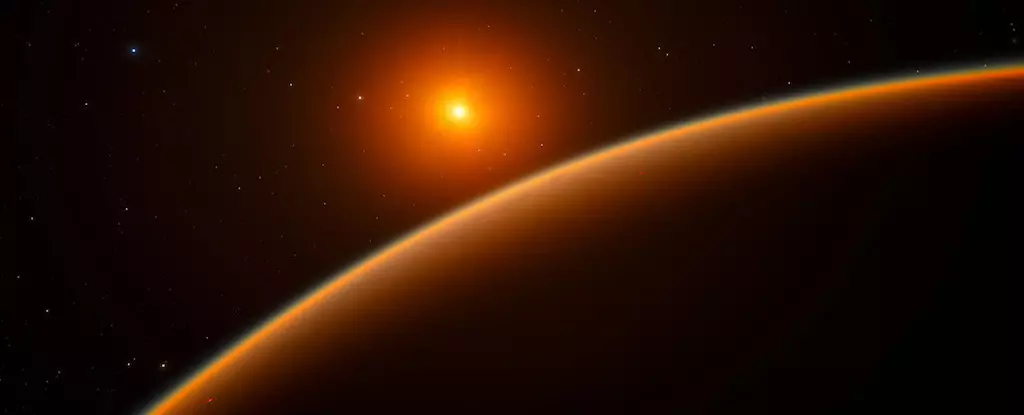In an exciting turn of events for the field of astronomy, new research indicates that Earth-like exoplanets might be prevalent throughout our galaxy, the Milky Way. Lead author Weicheng Zang and his team from the Harvard and Smithsonian Center for Astrophysics have shed light on the existence of a newfound super-Earth—an intriguing class of planets that are larger than Earth yet smaller than Neptune. This discovery not only challenges our previous notions of planetary distribution but also indicates that these enigmatic worlds could exist in areas of the galaxy previously thought to be uninhabited by such smaller celestial bodies.
Typically, when we consider exoplanets, we envision large gas giants or ice giants occupying distant orbits. However, the researchers have unearthed this super-Earth situated at a remarkable distance from its star, equivalent to the distance between Jupiter and our Sun. When Zang remarked, “we found a ‘super-Earth’ in a place where only planets thousands or hundreds of times more massive than Earth were found before,” it epitomizes the paradigm shift that this study represents in our understanding of the Milky Way’s planetary system.
Tools of Discovery: Microlensing and Broader Implications
The researchers employed gravitational microlensing—a sophisticated technique that uses the gravitational field of a massive object to magnify the light from a background star—to reveal this super-Earth. In microlensing events, a massive celestial body acts as a lens, bending the light and causing a temporary amplification of brightness. The study spotlighted a microlensing occurrence dubbed OGLE-2016-BLG-0007, initially detected in 2016. Microlensing provides a unique avenue for spotting exoplanets that orbit at more extensive distances from their stars, positions that are traditionally harder to monitor with conventional methods.
This ingenuity offers astronomers a new lens through which to view the universe, expanding our understanding of exoplanet populations. By collaborating with data from the Korea Microlensing Telescope Network (KMTNet), researchers gathered more significant evidence—arguably the most comprehensive sample of exoplanets to date, featuring three times as many subjects as past studies. This larger pool has revealed not just the size spectrum of known exoplanets but also a fascinating diversity, laying the groundwork for future investigations into their developmental histories.
Redefining the Demographics of Planets
The research further refines our understanding of the demographic stability of super-Earths—planets that display a weight between that of Earth and Neptune. Previously thought to only exist in closely bound orbits, this new evidence suggests they also thrive in the sprawling regions around their host stars. This could mean that within the vast expanse of our galaxy, one in every three stars might be nurturing a super-Earth in orbit reminiscent of our own gas giants. The implications of this discovery are staggering, as they suggest a potentially abundant repository of diverse planetary systems waiting to be explored.
As co-author Andrew Gould outlined, the study has illuminated patterns of planetary size and distribution that were previously shrouded in mystery. “Scientists knew there were more small planets than big planets, but in this study, we were able to show that within this overall pattern, there are excesses and deficits,” he explains. This finding not only deepens our intrigue but also complicates it; understanding the precise distribution of these bodies is critical in framing our broader narrative about planetary evolution and formation.
The Future of Exoplanet Research: A Toward a New Galactic Perspective
Although our understanding has vastly expanded, significant gaps in knowledge persist. Researchers are striving to discern the conditions and processes that lead to the formation of such planets. While this study has unveiled a substantial presence of super-Earths in Jupiter-like orbits, it simultaneously poses questions about their potential habitability and the conditions that prevail on their surfaces.
Experts underscore the rarity and challenge of conducting microlensing research, emphasizing that discovering a microlensing event that hosts a planet is a monumental challenge. Co-author Richard Pogge succinctly captures the intricacies involved, noting that “finding a microlensing star event is hard. Finding a microlensing star with a planet is hard squared.” This underlines the meticulous and often arduous nature of astronomical exploration, emphasizing the need for continued innovation in detection methods.
As these astronomical revelations unfold, we find ourselves peering deeper into the cosmos, filled with a sense of wonder and anticipation for the discoveries that lie ahead. The prospect of numerous super-Earths scattered throughout our galaxy not only ignites our imagination about the potential for life beyond Earth but also emphasizes the exciting and ongoing journey of understanding the universe around us.


Leave a Reply